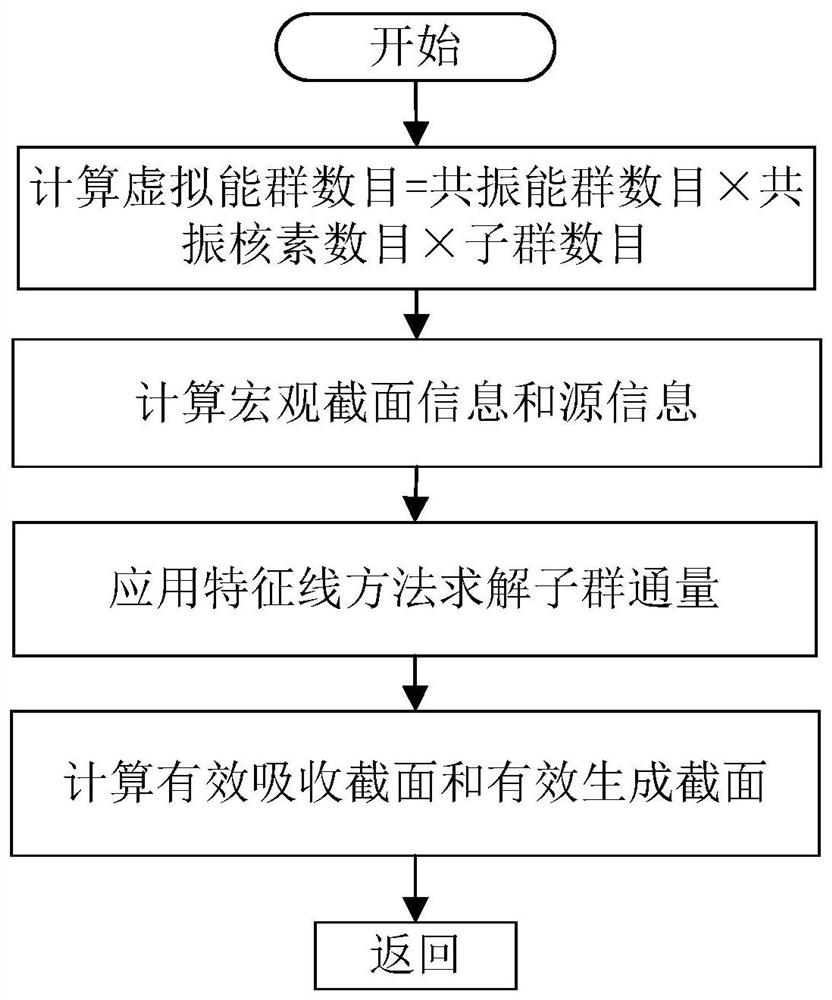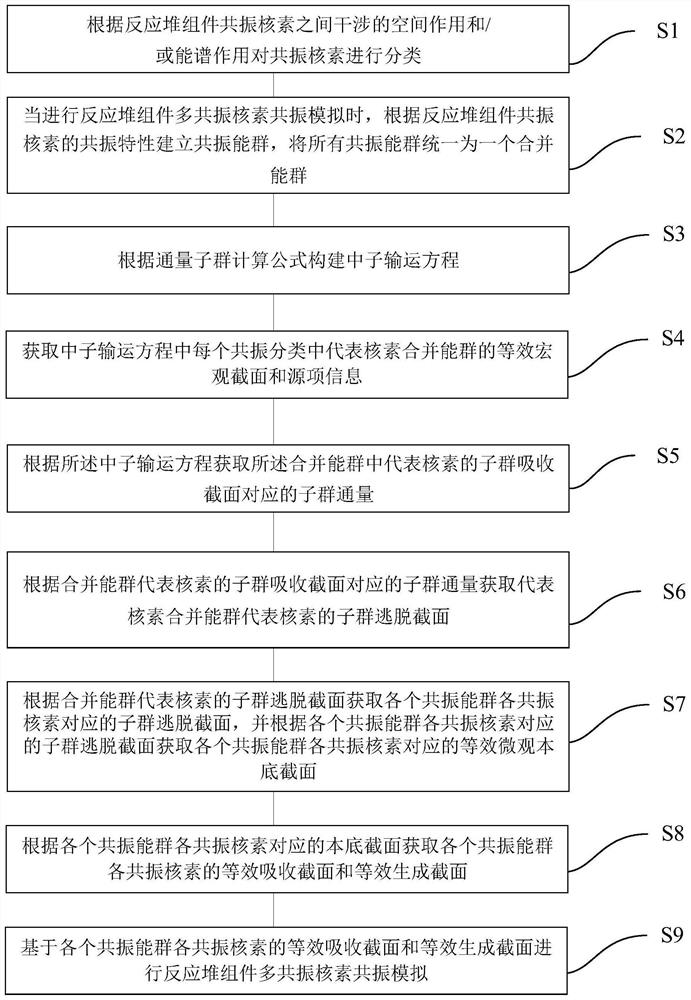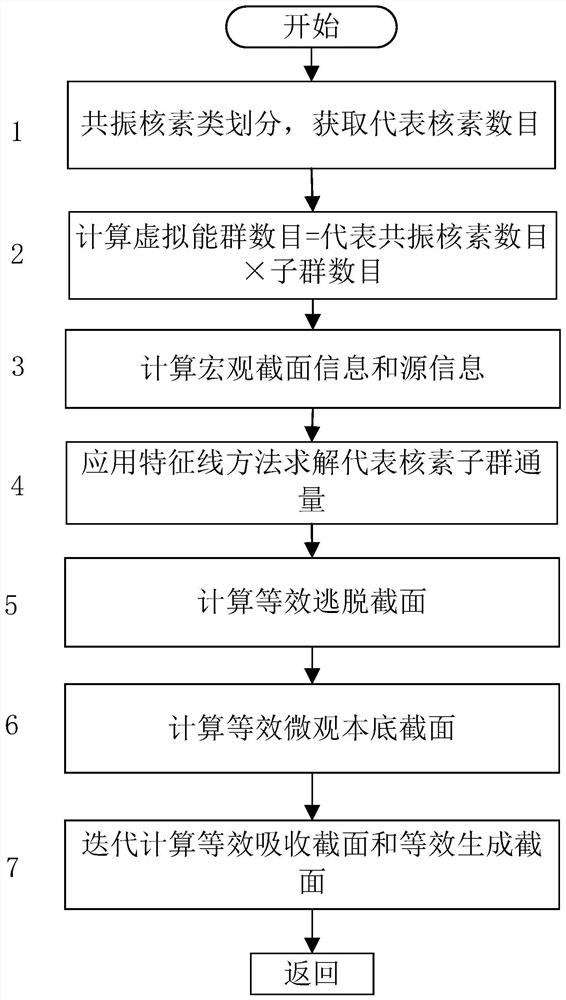Multi-resonance nuclide resonance simulation subgroup optimization method and system for reactor assembly
A resonance nuclide and reactor technology, applied in design optimization/simulation, etc., can solve problems such as large number of grids, many resonance nuclides, and long time for solving subgroup fluxes, so as to improve calculation efficiency and reduce calculation time Effect
- Summary
- Abstract
- Description
- Claims
- Application Information
AI Technical Summary
Problems solved by technology
Method used
Image
Examples
Embodiment
[0063] Such as figure 2 As shown, the present invention is used for reactor component multi-resonance nuclide resonance simulation subgroup optimization method, comprising the following steps:
[0064] S1: Classify resonant nuclides according to the spatial and / or spectral effects of interference between resonant nuclides in reactor components;
[0065] S2: When performing multi-resonance nuclide resonance simulation of reactor components, establish resonance energy groups according to the resonance characteristics of reactor component resonant nuclides, and unify all resonance energy groups into a combined energy group;
[0066] S3: Construct the neutron transport equation according to the flux subgroup calculation formula;
[0067] S4: Obtain the equivalent macroscopic cross-section and source term information representing nuclide fusion energy groups in each resonance category in the neutron transport equation;
[0068] S5: According to the neutron transport equation, ob...
PUM
 Login to View More
Login to View More Abstract
Description
Claims
Application Information
 Login to View More
Login to View More - R&D
- Intellectual Property
- Life Sciences
- Materials
- Tech Scout
- Unparalleled Data Quality
- Higher Quality Content
- 60% Fewer Hallucinations
Browse by: Latest US Patents, China's latest patents, Technical Efficacy Thesaurus, Application Domain, Technology Topic, Popular Technical Reports.
© 2025 PatSnap. All rights reserved.Legal|Privacy policy|Modern Slavery Act Transparency Statement|Sitemap|About US| Contact US: help@patsnap.com



